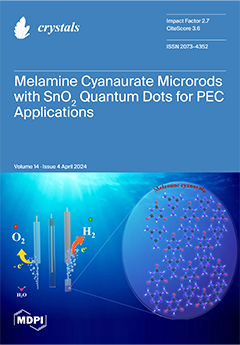A systematic study was conducted on the impact of annealing treatments on the microstructure and properties of cold-rolled Ti
50Ni
47Fe
3 alloys using optical microscopy, scanning electron microscopy, electron backscattered diffraction, and an electronic universal testing machine. It was found
[...] Read more.
A systematic study was conducted on the impact of annealing treatments on the microstructure and properties of cold-rolled Ti
50Ni
47Fe
3 alloys using optical microscopy, scanning electron microscopy, electron backscattered diffraction, and an electronic universal testing machine. It was found that, during low-temperature annealing (400 °C and 500 °C), the annealing time had no significant effect on the microstructure or properties of the Ti
50Ni
47Fe
3 alloy. Only elongation (δ) increased with the increase in the annealing time, and the grain orientation of the Ti
50Ni
47Fe
3 alloy was <111>//RD (rolling direction). When annealing at medium–high temperature (600 °C), as the annealing time increased, recrystallization and grain growth processes occurred, resulting in a continuous decrease in strength and an increase in δ. Meanwhile, it was found that the grain orientation of the cold-rolled Ti
50Ni
47Fe
3 alloy changed from <111>//RD during the recovery and recrystallization processes to <101>//RD after the grain growth process. The orientation distribution function cross-section φ2 = 45° results indicate that the texture was mainly distributed along the γ orientation line (φ1 = 0~90°, Φ = 54.7°, φ2 = 45°). When annealed at 400 °C and 500 °C, the texture of the Ti
50Ni
47Fe
3 alloys was (111)[uvw]. When the annealing treatment was 600 °C for 120 min, a (110)[uvw] texture occurred. Additionally, ductile fracture occurred in all specimens, and the crack origin was located on one side of the fracture surface, with obvious “Y”-shaped propagation. This article studied annealing treatments of cold-rolled Ti
50Ni
47Fe
3 alloys, providing corresponding theoretical guidance for subsequent production applications.
Full article





